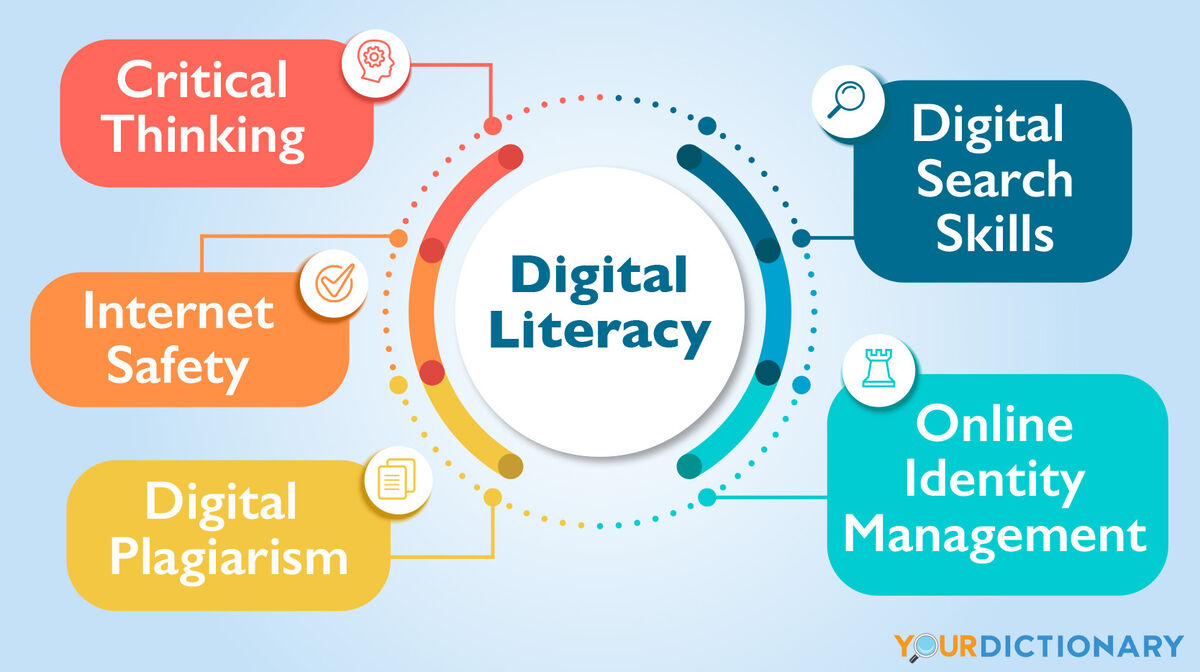In today’s fast-paced, technology-driven world, the importance of digital literacy cannot be overstated. As we navigate through an era dominated by digital communication, online resources, and technological advancements, being digitally literate is essential for success in both personal and professional realms. Digital literacy encompasses a range of skills, including the ability to effectively use digital tools, critically evaluate online information, and communicate responsibly in virtual environments. Understanding these concepts is crucial for thriving in a society where technology shapes our daily lives.
This article will delve into the various facets of digital literacy, highlighting its significance in enhancing employability, fostering informed decision-making, and promoting active participation in the digital community. Readers will discover how digital literacy empowers individuals to adapt to new technologies, engage with diverse perspectives, and navigate the complexities of the online world. Furthermore, we will explore practical strategies for improving digital skills, ensuring that you are well-equipped to face the challenges of an increasingly digital landscape.
As we progress through this discussion, you will gain valuable insights into the role of digital literacy in education, the workplace, and everyday life. Whether you are a student, a professional, or simply someone looking to enhance your digital skills, this article aims to provide you with the knowledge and tools necessary to thrive in a technology-driven world. So, read on to unlock the potential of digital literacy and discover how it can transform your life!
In today’s fast-paced, technology-driven world, digital literacy has become an essential skill for individuals of all ages. As technology continues to evolve, the ability to navigate digital environments effectively is crucial for personal and professional success. This article explores various aspects of digital literacy, highlighting its significance in our modern society.
Understanding Digital Literacy
Digital literacy encompasses a range of skills that allow individuals to effectively use technology and the internet. It includes the ability to find, evaluate, and communicate information in various digital formats. In a world where information is abundant, being digitally literate means being able to discern credible sources from unreliable ones, which is vital for informed decision-making.
Moreover, digital literacy extends beyond basic computer skills. It involves understanding how to use various software applications, social media platforms, and online communication tools. As technology becomes more integrated into our daily lives, the need for comprehensive digital literacy is more pressing than ever.
The Role of Digital Literacy in Education
In educational settings, digital literacy is crucial for both students and educators. For students, being digitally literate enhances their learning experience, enabling them to access a wealth of resources and collaborate with peers globally. Educators, on the other hand, must be equipped with digital skills to effectively integrate technology into their teaching methods.
Furthermore, digital literacy in education fosters critical thinking and problem-solving skills. Students learn to analyze information, engage in discussions, and present their ideas using digital tools, preparing them for the demands of the modern workforce.
Digital Literacy and Employment Opportunities
In the job market, digital literacy is often a prerequisite for employment. Many industries require employees to possess a certain level of digital skills, from basic computer proficiency to advanced data analysis. Employers increasingly seek candidates who can adapt to new technologies and utilize digital tools to enhance productivity.
Additionally, digital literacy can open doors to remote work opportunities, allowing individuals to work from anywhere in the world. As more companies embrace flexible work arrangements, being digitally literate becomes a key factor in career advancement and job security.
The Impact of Social Media on Digital Literacy
Social media platforms have transformed the way we communicate and share information. While these platforms offer numerous benefits, they also pose challenges related to digital literacy. Users must navigate issues such as misinformation, privacy concerns, and online etiquette.
Understanding how to engage responsibly on social media is a vital aspect of digital literacy. Individuals must learn to critically evaluate the content they encounter and understand the implications of their online interactions. This awareness is essential for fostering a safe and respectful digital environment.
Digital Literacy for Lifelong Learning
In a technology-driven world, the concept of lifelong learning has gained prominence. Digital literacy plays a crucial role in this process, as it enables individuals to continuously acquire new skills and knowledge. Online courses, webinars, and digital resources provide opportunities for self-directed learning, making education more accessible than ever.
Moreover, being digitally literate allows individuals to stay updated with industry trends and advancements. This adaptability is essential for personal growth and professional development in an ever-changing job market.
Addressing the Digital Divide
The digital divide refers to the gap between those who have access to technology and those who do not. This disparity can hinder individuals’ ability to develop digital literacy skills, perpetuating cycles of inequality. Addressing the digital divide is crucial for ensuring that everyone has the opportunity to thrive in a technology-driven world.
Efforts to bridge this gap include providing access to technology in underserved communities, offering digital literacy training, and promoting policies that support equitable access to digital resources. By addressing the digital divide, we can empower individuals and foster a more inclusive society.
The Future of Digital Literacy
As technology continues to evolve, the landscape of digital literacy will also change. Emerging technologies such as artificial intelligence, virtual reality, and blockchain will require new skills and competencies. Staying ahead of these trends is essential for individuals and organizations alike.
Future digital literacy initiatives must focus on equipping individuals with the skills needed to navigate these advancements. This includes fostering creativity, critical thinking, and adaptability, ensuring that individuals are prepared for the challenges and opportunities that lie ahead.
Conclusion: Embracing Digital Literacy
In conclusion, digital literacy is a fundamental skill in our technology-driven world. It impacts various aspects of life, from education and employment to social interactions and lifelong learning. As we continue to embrace technology, prioritizing digital literacy will empower individuals and communities, fostering a more informed and engaged society.
By investing in digital literacy initiatives and addressing the digital divide, we can ensure that everyone has the opportunity to thrive in an increasingly digital world. Embracing digital literacy is not just a personal responsibility; it is a collective effort that will shape the future of our society.
| Aspect | Description |
|---|---|
| Definition | Digital literacy refers to the ability to effectively and critically navigate, evaluate, and create information using a range of digital technologies. |
| Relevance | In a technology-driven world, digital literacy is essential for personal, educational, and professional success, enabling individuals to participate fully in society. |
| Skills Required | Key skills include information literacy, communication, collaboration, creativity, and technical proficiency with digital tools. |
| Impact on Employment | Employers increasingly seek digitally literate candidates, as many jobs require the use of technology for communication, data analysis, and project management. |
| Education | Educational institutions are integrating digital literacy into curricula to prepare students for a technology-centric workforce and to foster critical thinking. |
| Social Inclusion | Digital literacy promotes social inclusion by providing access to information, services, and opportunities that are increasingly available online. |
| Challenges | Barriers to digital literacy include socioeconomic factors, lack of access to technology, and varying levels of digital skills among different populations. |
| Future Trends | As technology evolves, continuous learning and adaptation will be necessary to keep pace with new tools and platforms, emphasizing lifelong digital literacy. |



